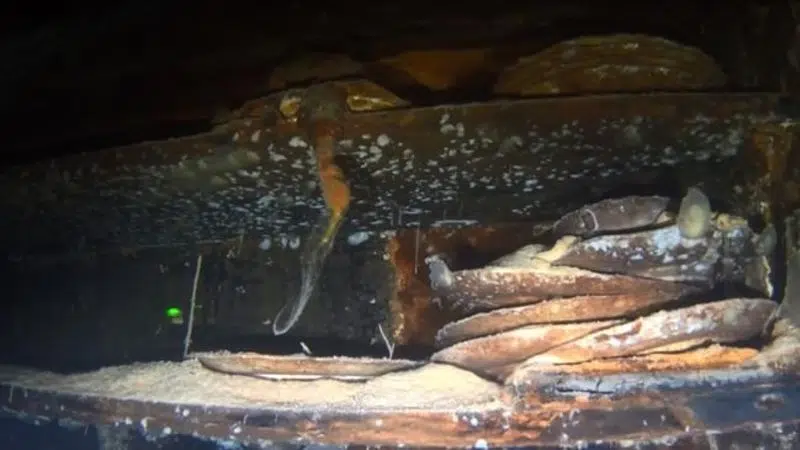
‘A solemn space’: first interior shots of Franklin’s HMS Terror released
It remains, despite nearly two centuries beneath the Arctic seas, amazingly shipshape.
First pictures from inside the HMS Terror, part of the doomed Franklin Expedition, show tidy rows of crockery, neatly stowed storage lockers — even a propeller sitting solidly in place as if ready for a head of steam.
“Overturned armchairs, thermometers on the wall, stacked plates, chamberpots, washbasins — often in their correct position,” said Ryan Harris, one of a team of Parks Canada underwater archaeologists probing the secrets of the British warship lost around 1848 while searching for the Northwest Passage.
“We were able to see an incredible array of artifacts.”


